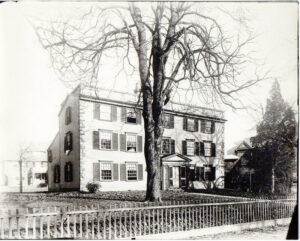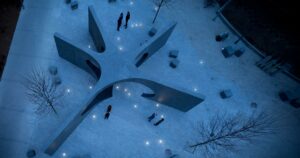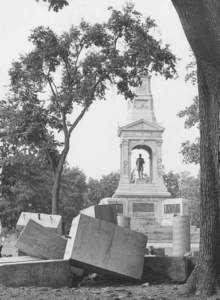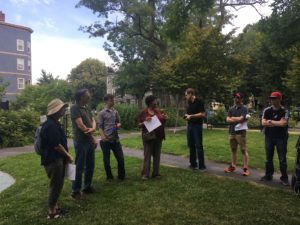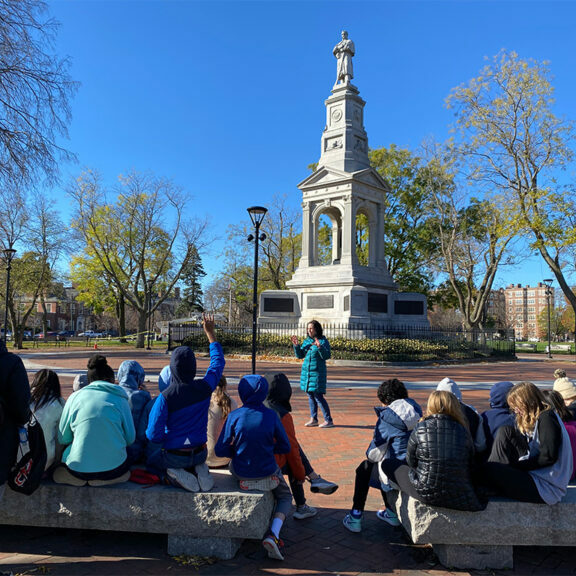
Meaning of monuments can be in what’s missing
By Beth Folsom, 2022
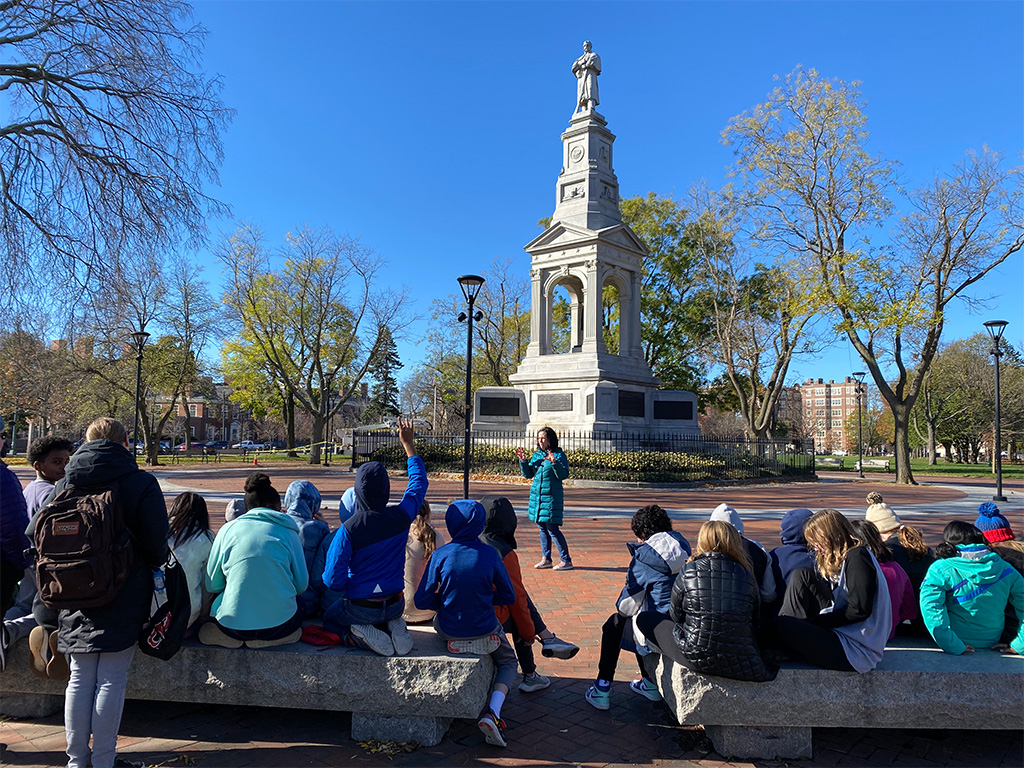
Cambridge is filled with monuments. Statues, plaques and memorials across the city commemorate people and events from the past four centuries. Many Cantabrigians walk or drive past these monuments daily on their way to and from work, school and home without knowing the stories behind them. History Cambridge had the opportunity recently to host Buckingham, Browne & Nichols School sixth-graders for a tour of the monuments and memorials on Cambridge Common. The students, led by teacher Lora Mazaheri, also visited our headquarters at the Hooper-Lee-Nichols House and viewed our art installation, “Forgotten Souls of Tory Row: Remembering the Enslaved People of Brattle Street.” Students and teachers had the opportunity to discuss the meaning behind monuments and public art, including issues of representation and inclusion in our city’s collective memory.
We began with a tour of the common, exploring the history behind the monuments there including the Civil War Memorial, Irish Famine Memorial, Washington Elm and the memorial to Prince Hall. What do these monuments tell us, not only about the people and events they purport to commemorate, but about the society that created them? Why are certain monuments present on the common, and how does their location in this specific, central location lend them legitimacy and importance? Who is not represented there, and how do these omissions shape our collective view of Cambridge history? Students explored these and many more questions as we explored ways in which monuments and memorials not only capture the past, but help shape how we remember it.
At History Cambridge headquarters at the Hooper-Lee-Nichols House on Brattle Street, students and teachers got to speak with members of Black Coral, the artist collective that created the temporary art installation on view on our lawn. Students learned about Black Coral’s vision for this piece, which uses bottle trees to connect to West African traditions and honor the many people – those whose names and stories we know, and those about whom we do not have records – who lived and worked on the land we now call Tory Row. We explored the ways in which public art is similar to permanent monuments, as well as the ways in which it can function as a more timely and nimble way to honor those whose stories have not been represented in the memorial landscape.
In reflecting on their visit, students observed that they had learned the history behind some of the memorials, but that it was interesting to think about when, why and by whom they had been created. They had many suggestions about people and groups who are not represented in our city’s monuments but should be, including women, Indigenous people and other racial and ethnic groups whose presence has helped to make Cambridge the place it is today. Students also reflected on their discussion with Black Coral and the impact public art can have, especially in places where it may feel unexpected. One student noted that “art is a tool that historically was used for manipulation and propaganda, but it is cool to see art being used to give light to stories previously untold.”
History Cambridge’s mission is to engage with the past through collecting and sharing the stories of all Cantabrigians, understanding that our city’s rich and diverse mosaic is not complete without the histories of all who have lived and worked here over the centuries. Monuments, memorials and public art are crucial elements of how we as a community tell our collective history, and we strive to empower students, teachers and all who view these monuments to think critically about the stories they tell, as well as about the stories that still need to be included in our memorial landscape. Empowering the next generation of Cantabrigians to be not only consumers but also creators of history is a key part of our mission, and we look forward to continuing our collaboration with BB&N and other schools in the future.
This article was originally published in our “Did You Know?” column in Cambridge Day.


